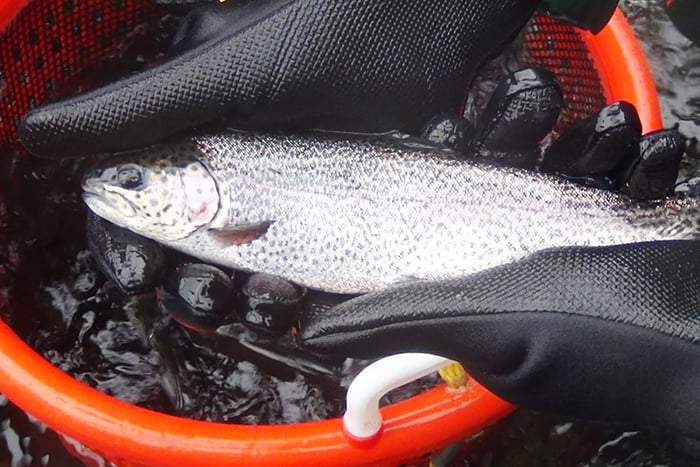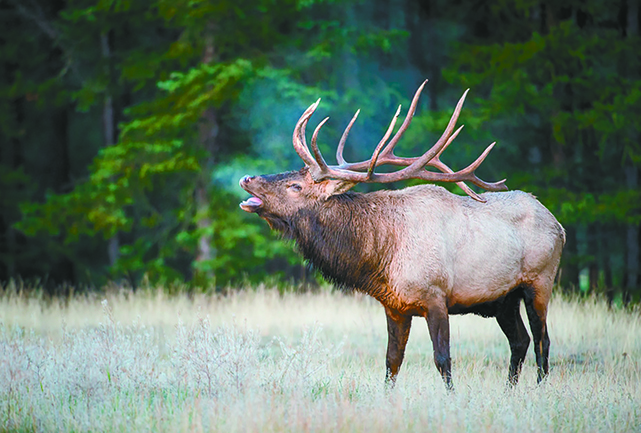Where do Illinois’ rainbow trout come from? Fall, spring seasons rely on state’s hatchery system – Outdoor News

Although many Illinois anglers can tell you stories about catching rainbow trout over the decades, the fish is not native here and there are no naturally reproducing populations in these water bodies.
The first rainbow trout stocking in Illinois occurred before the 20th century, and that tradition lives on today, thanks to work done in hatcheries like the Jake Wolf Memorial Fish Hatchery in Illinois.
This October, trucks from Jake Wolf will start making their way across the state, full of trout that were grown in Illinois. These fish, along with others purchased in part with funding support from the Inland Trout Stamp, will be welcomed by anglers.
This will be the first glimpse that many Illinois residents will get of these fish that have been quietly growing here since November.
Every fall, hatchery staff receive a shipment of fertilized trout eggs from Erwin National Fish Hatchery, located in Erwin, Tennessee. Last year, that shipment came in late November.
MORE COVERAGE FROM ILLINOIS OUTDOOR NEWS:
Ralph Loos: Some regulation changes Illinois hunters should know heading into 2024-25 seasons
Channel catfish had highest PFAS count in Illinois rivers
After making the trip to Illinois, the eggs need to be disinfected to kill any unwelcome bacterial or fungal hitchhikers. Once cleaned, technicians at the hatchery sort the eggs to remove any that are not viable, and then the eggs are sent to the incubation room.
In the incubation room, the eggs are kept in trays designed to provide a constant flow of oxygen-rich water. All water used by Jake Wolf comes directly from the Mahomet Aquifer.
The water from the aquifer is around 55 degrees Fahrenheit and does not need to be heated for the trout, because they are perfectly adapted to thrive at that temperature. Eggs in incubation trays are cleaned regularly, providing opportunities to evaluate their development and inspect them for illness.
After about two weeks, the eggs begin to hatch. While the freshly hatched trout (called “fry”) are recognizable as fish, they bear a limited resemblance to their metallic and robust parents. They also are still attached to bright orange yolk sacs and won’t start swimming until they have absorbed all the nutrients in those yolk sacs, which can take nearly a week. When they’ve used up their yolks, it’s time for them to start eating.
This year, the trout hit this stage at the end of December. At this point, they were placed in large indoor tanks, called start tanks. These tanks can hold 1,100 gallons of water, flowing at a rate from 10 to 60 gallons a minute. The flow rate is adjusted based on the size and density of fish in each tank.
Feeders hanging above the tanks dispense food pellets every 15 minutes, giving the trout 96 opportunities to eat each day. All fish tanks are cleaned daily by hatchery staff, and fish growth is measured weekly. Young fish can grow quickly, so it’s important to check regularly to make sure their growth is on track.
When the fish reach about 4 to 5 inches in length, they will be transferred to raceways outdoors that are more than 10 times larger than the indoor tanks.
That’s where the rainbow trout are right now.
If you visit the hatchery for a tour, you’ll see that the outdoor raceways are subject to different environmental conditions than their previous indoor home.
Outdoors, the trout could be exposed to predators, and the hot Illinois summer temperatures are no joke. To counteract these concerns, the hatchery keeps the trout cold enough to grow by continual flow of the same water that the eggs were incubated in.
That 55-degree water flows through the raceways fast enough that it cannot be heated by the sun. The young fish are protected from mammal predators, such as raccoons, by a fence around the entire 160-acre hatchery property. These fish are protected from avian predators by a newly installed optical laser system designed to scare off any birds that might be seeking a fish dinner. Their raceway is still cleaned daily, and they are fed about two to three times an hour.
By the time October rolls around, these fish will be at least 10 inches long. They’ll be scooped up with nets into stocking trucks, with tanks already filled with fresh clean water and a little salt – think of the salt as being like sports drink for the fish. Transport can stress them out, so the addition of salt helps them keep their electrolytes up while they travel.
These trout will be stocked in lakes and ponds around the state. Stocking them a couple weeks before the start of trout season gives the fish a chance to acclimate to the new setting, ready for anglers to cast their lines in search of these colorful and active fish.
If you want to try to catch one, check out the locations listed on the IDNR website to find a stocking location near you. This process started up again this month (August) for the trout that will be released in April.
Kayleigh Smith is the Outreach Specialist at Jake Wolf Memorial Fish Hatchery in Topeka. This article originally appeared in DNR’s Wildlife Journal.







